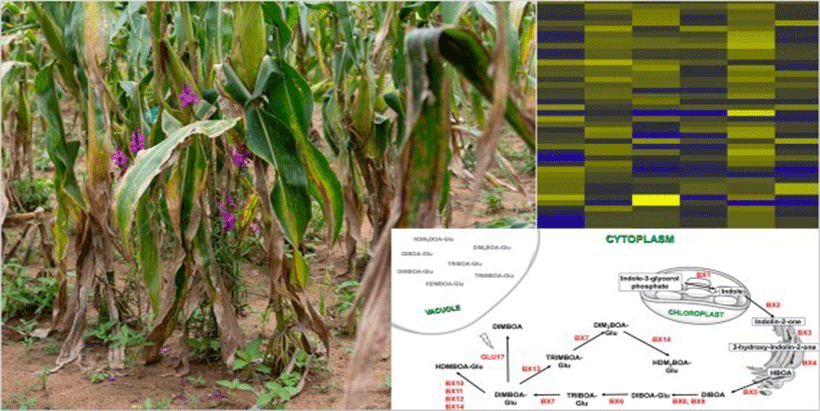
IITA–CGIAR scientists have discovered remarkable resistance mechanisms that promise to improve crop protection from Striga infestation in Africa and enhance maize production across the continent.
In a recent study researchers found a previously unknown defense strategy based on the accumulation of a secondary metabolite called DIMBOA—a benzoxazinoid—that contributes to blocking Striga invasion of the maize root vascular system.
Striga hermonthica is an invasive parasitic weed entering host plant roots and forming direct vascular connections to the host vascular system, thus withdrawing water and nutrients. Despite its beautiful purple-colored flowers, it is commonly named witchweed to reflect the dramatic effect produced on maize and other major crops, seeming to magically arrest host growth and destroy yield, potentially up to 100%. This nutrient-sucking parasite thrives in poor soils with low rainfall conditions and farming systems using minimal or no fertilizer and poor crop management practices.
